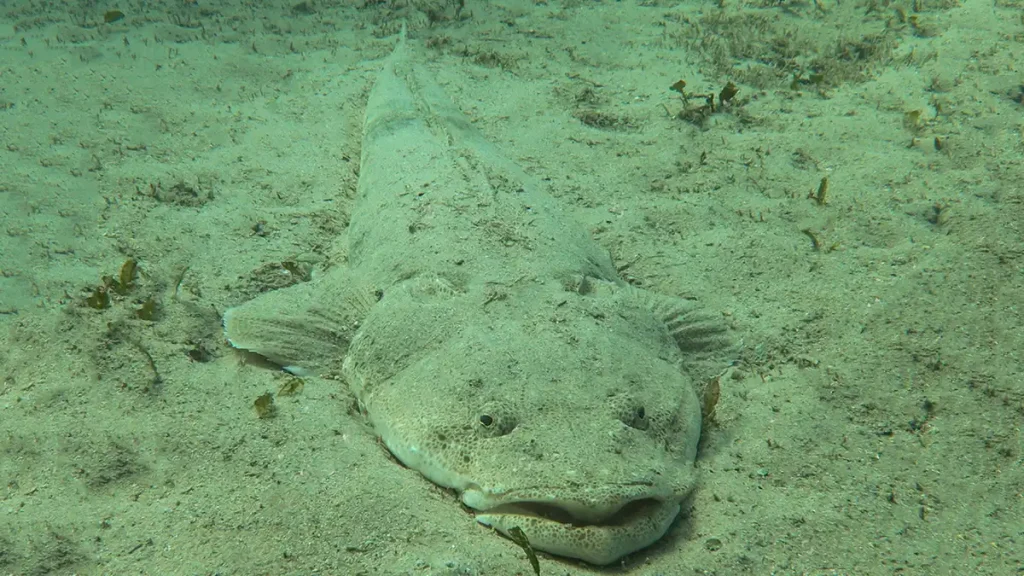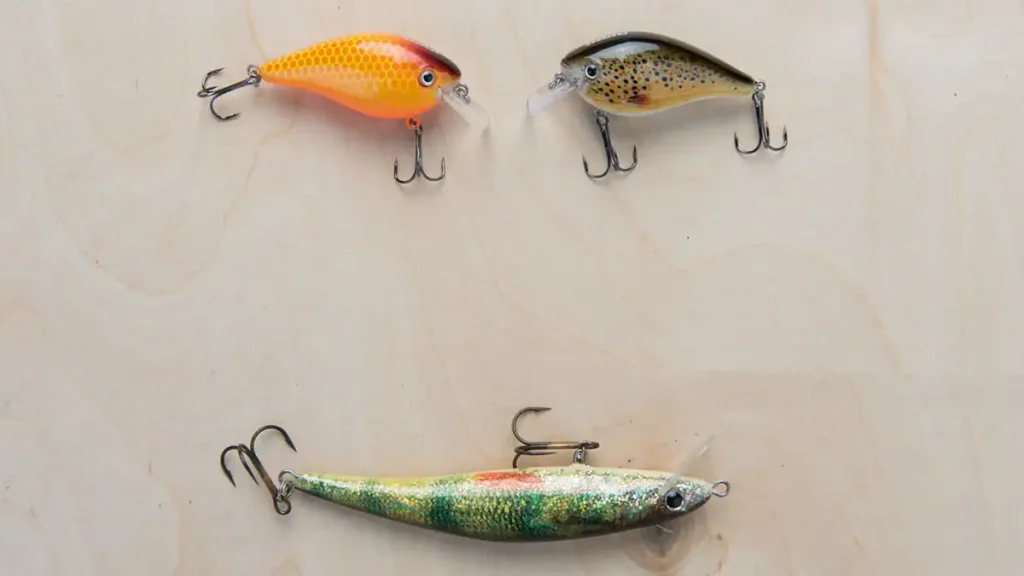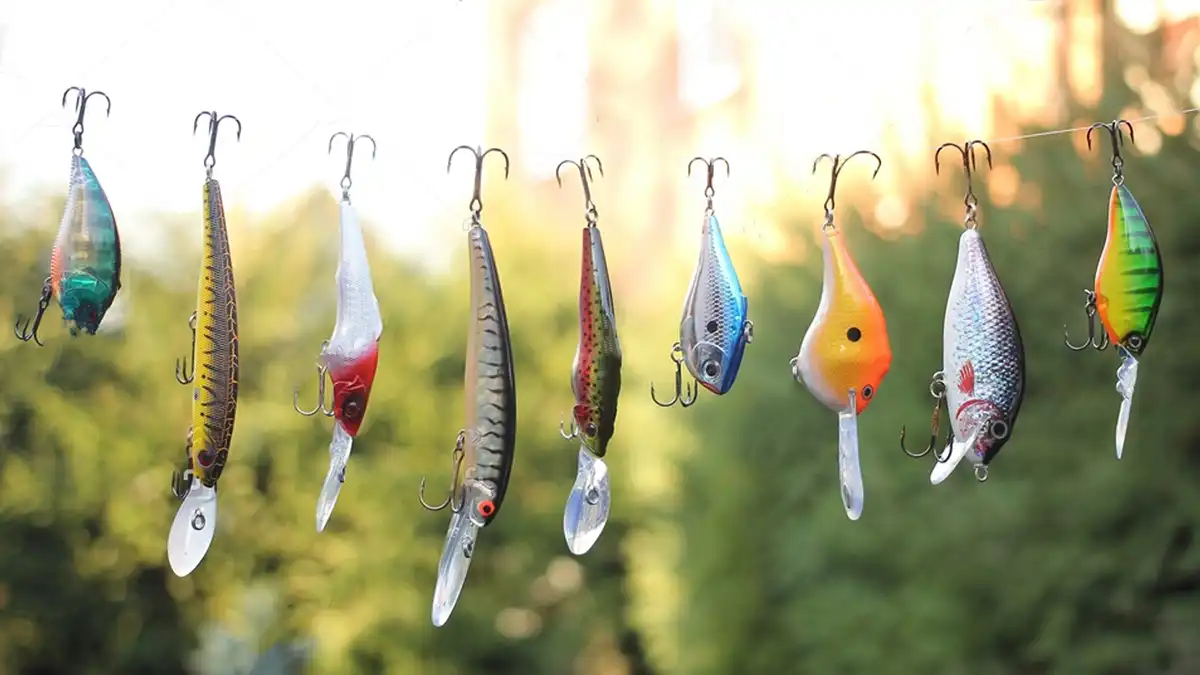Are you looking for the best lures for Flathead fishing? If you’re new to this, you’ve picked a great place to start. This guide is all about choosing the right lures to help you catch a flathead. We’ll break down the top picks and share some tips to get you hooked on flathead fishing in no time.
Before you cast your line, remember that the right gear can make a big difference. A strong, reliable fishing line is key, and that’s where ReelBoss comes in. Check out our high-quality braided lines at ReelBoss. They’re perfect for feeling the slightest tug, making your fishing trip even more exciting.

Flathead Fishing Basics
So, you’re keen to learn about Flathead fishing? Great choice! Flathead, these guys are pretty cool and a favorite for many anglers. They mainly chill at the bottom of estuaries, rivers, and sometimes along coastal beaches. What’s neat about them is they love to bury themselves in sand or mud, waiting to ambush their prey – talk about a sneaky tactic!
Now, why do folks love fishing for flathead? First off, they’re pretty widespread, so you can find them in lots of places across Australia. They put up a decent fight, making catching them super satisfying. Plus, they’re tasty, which is a nice bonus after a day’s fishing.
When you’re planning to catch some Flathead, remember a few things. The time of day can really make a difference. Early morning or late afternoon, that’s when these guys are most active and on the hunt. Water conditions matter too. Flathead like it a bit murky since it’s easier for them to hide and pounce on their food. So, after a bit of rain, when the water’s stirred up, that’s a prime time.
Don’t forget tides. We’ve found the best tides to catch flatties on is during the outgoing tide. They will lie in wait at the bottom of a drop off, waiting for baitfish, prawns or other prey to swim overhead and then they will strike.
Trying to match as many of these conditions together will increase your chances, for example, in the morning during the run out tide while the water is a little murky from rain the day before would be a great time to head out to get some flatties. And of course, choosing the best lures for flathead is crucial. You want something that’ll grab their attention without scaring them off. We’ll dive into that in the next section, so stick around!
Types of Lures for Flathead Fishing

Alright, let’s get into the fun part – the Flathead lures! When it comes to picking the right lure, it’s like choosing a favorite snack – you’ve got to know your options. Luckily flathead are not fussy when it comes to what they eat, they are likely to strike at a variety of lures.
This characteristic makes them an ideal target for both novice and experienced anglers. Understanding the different types of lures and their effectiveness can significantly enhance your fishing experience. Here’s a straightforward look at the main lure types for catching flathead:
Soft Plastic Lures: These are incredibly versatile. Their design imitates small fish or prawns, flathead’s favorites. When using soft plastics, the key is in the retrieval technique. A slow, steady ‘lift and drop’ action mimics a wounded fish, highly appealing to flathead. Experiment with different colors and shapes to see what the fish are biting on any given day.
Vibes and Blades: Excellent for deeper water or when flathead are less active. These lures produce vibrations in the water, which can trigger flathead to strike even when they’re not in a feeding mood. They work well on a simple straight retrieve or with a lift and drop technique, similar to soft plastics.
Surface Lures: Incredibly fun to use, especially in shallow, calm waters. Best used during low light conditions like early morning or late afternoon. The key is to mimic the erratic action of injured prey on the surface. This often results in spectacular strikes from flathead.
Jig Heads: These are used in conjunction with soft plastics. They add weight for casting and help the lure sink to the desired depth. The weight of the jig head should be chosen based on the current strength and water depth. A lighter jig head allows a more natural drift in shallow or slow-moving waters, while a heavier one is better for deeper or faster-moving waters.
Hard Body Lures: These lures have a built-in action that mimics a swimming fish. They come in various sizes and colors and can be used in both shallow and deep waters. The wobbling action of hard body lures is particularly effective in attracting flathead, which are often enticed by the movement and vibration.
Crankbaits: These are a type of hard body lure designed to swim at a predetermined depth. They’re great for exploring different water layers to find where the flathead are feeding. The action of a crankbait, which mimics a fleeing or injured fish, is often irresistible to flathead. They can be used with a steady retrieve or with stop-and-go motions to create an erratic action that mimics injured prey.
Each type of these flathead lures has its moment to shine, depending on where you’re fishing and what the conditions are like. Mix and match, and see which one gets you the best results. Remember, there’s no one-size-fits-all in fishing – it’s all about the adventure and finding out what works for you!
Choosing the Best Lures for Flathead Fishing
So, you’re wondering how to pick the best lures for flathead? It’s not just about grabbing the coolest looking one. There’s a bit of science to it, but don’t worry – it’s not rocket science!
Matching Lures with Water Conditions and Seasons: The trick is to match your lure to the environment. In murkier water, go for lures that make a bit more noise or vibration – they help flathead locate them. In clearer water, you’ll want something more subtle and realistic. Also, think about the seasons. During warmer months, flathead are more active and might go for more aggressive lures. In cooler times, they’re a bit lazier, so a slower, easier target like a soft plastic might work better.
Size and Color Considerations: Size matters here, but not always the way you think. Bigger isn’t always better. Try to match the size of the local baitfish – that’s what the flathead are used to eating. Color-wise, natural colors work great in clear water, while brighter, more contrasting colors can be better in murkier conditions.
Understanding Flathead Feeding Habits: Flathead are ambush predators. They like to lie in wait and pounce when the moment’s right. So, your lure should mimic the behavior of a small fish or other prey. Think about how your lure moves – you want it to look like an easy snack just cruising along, not suspecting a thing.
Remember, there’s no one perfect lure for every situation. The best lures for flathead can vary, so having a variety in your tackle box is a smart move. Experiment a bit, have fun with it, and you’ll find what works best for you and the fish!
Best Lures for Flathead Fishing for Beginners

Jumping into flathead fishing and wondering about the best soft plastics for flathead? Maybe you’re even curious about the best bait for flathead to complement your lure choice? No worries, mate. Here’s a little guide to get you started with some top lures that are beginner-friendly and super effective. Plus, I’ll throw in some tips on how to use them, and a nod to what baits work well alongside these lures.
- Paddle Tail Soft Plastics: These are like the bread and butter for flathead fishing. They have a rounded tail that wiggles in the water, mimicking a swimming fish. Why they’re great: Paddle tails are simple to use and flathead love the way they move. Just cast it out, let it sink, and reel it in slow and steady. Every few seconds, give it a little twitch to make it more enticing.
- Curly Tail Soft Plastics: These guys have a long, spiral tail that creates a lot of movement in the water. They’re fantastic because they can mimic a wounded baitfish, which is like a dinner bell for flathead. To use them, try a ‘lift and drop’ technique. Cast out, let the lure hit the bottom, then lift your rod tip up and reel in the slack as it falls back down.
- Jerk Shads: These lures are longer and have a more slender profile. They’re effective because they look like a fleeing fish when you jerk them through the water. Flathead can’t resist this. The key here is in the retrieve – jerk your rod tip, then pause and let it sink. This mimicking a scared little fish trying to get away.
- Grub Style Soft Plastics: Grubs have a rounded body with a spiraled tail, making them super versatile for a variety of conditions. Their tail action is particularly irresistible to flathead, especially when jigging them along the bottom. To complement these lures, using a piece of fresh cut bait, like a small strip of mullet or pilchard, can be highly effective. This combination of the grub’s enticing movement and the natural scent of the bait creates an irresistible duo for flathead.
- Vibes: These are a bit different from your typical soft plastics. They’re more rigid and have a built-in vibration system. Why vibes rock: They send out vibrations that flathead can pick up with their lateral lines, making them a great choice in murkier waters. Use a steady retrieve with occasional pauses and twitches.
- Crankbaits: these are a standout choice for those targeting flathead, especially when used with a trolling technique. This method is arguably one of the easiest and most efficient ways to catch flathead. When you troll with crankbaits, you’re essentially covering a large area of water, increasing your chances of encountering these fish. The real trick lies in the ‘stop and go’ motion. This mimics injured prey, a tactic that’s almost irresistible to flathead.
As the crankbait dives and wobbles, it appears vulnerable and easy to catch, precisely what a flathead is looking for. This method is not only effective but also straightforward, making it ideal for anglers of all skill levels. By keeping the boat moving at a steady pace, then pausing occasionally, you create an erratic movement that flathead find hard to ignore.
This simple yet effective technique can turn an ordinary fishing trip into an exciting flathead-catching adventure. I especially like this method when I am out fishing with my young children, it’s a lot of fun and easy enough for my 3 and 5 year old to get involved.
Each of these lures for flathead has its place and time. Experiment with different types and colors based on where you’re fishing and what the water’s like. Remember, the best way to learn is to get out there and give it a go. You’ll quickly get a feel for what works best in your local waters. Happy fishing!
Practical Tips for Flathead Fishing
Alright, you’ve got your best lures for flathead lined up, but how do you make the most of them? Let’s chat about some practical tips and techniques that’ll help you out, especially if you’re just starting. Plus, I’ll point out a few common mistakes to dodge.
Basic Fishing Techniques for Beginners: First things first, keep it simple. Start with a basic cast and steady retrieve. This means casting your lure out, letting it sink a bit, and then reeling it in at a constant pace. Flathead are ambush predators, so they’ll often strike when the lure is moving steadily and predictably.
Casting and Retrieving Lures: When casting, aim to get your lure close to where you think flathead might be hiding – like sandy bottoms, near weed beds, or structures. It’s all about putting your lure right in their strike zone. For retrieving, a mix of steady reeling and occasional pauses works wonders. Those pauses give flathead a chance to strike, especially if they’ve been following your lure.
Common Mistakes to Avoid:
Not Paying Attention to the Environment: Flathead behavior changes with the tides, water temperature, and time of day. Pay attention to these factors and adapt your approach accordingly.
Ignoring the Importance of Stealth: Try to be as quiet and discreet as possible. Loud noises can spook flathead and other fish.
Forgetting to Check Your Gear: Always make sure your hooks are sharp and your line is in good condition. A dull hook or weak line can cost you a catch.
Being Impatient: Sometimes, fishing requires waiting. If you’re not getting bites, give it some time before moving to a new spot or changing lures.
Remember, fishing is as much about the experience as it is about the catch. Using the best lures for flathead is a great start, but combining them with the right techniques and a bit of patience will really up your game. So, grab your gear, head out there, and enjoy the adventure. Tight lines!
Conservation and Sustainable Fishing Practices
So, we’ve been talking about snagging flathead with the best lures, but there’s another super important part of fishing we should chat about – looking after our fishy friends and their homes. Sustainable fishing practices are key to making sure we can keep fishing for years to come.
Why Sustainable Fishing Matters: Every time we fish, we’re part of the environment. By fishing responsibly, we help maintain healthy fish populations and ecosystems. This means more flathead for future fishing trips and a better natural world for everyone.
Catch and Release Tips: If you’re practicing catch and release, it’s all about the welfare of the fish. Use barbless hooks or pinch the barbs on your hooks to make release easier. Handle the fish as little as possible, and keep it in the water while removing the hook. If you snap a photo, do it quickly. And always gently release the fish back into the water.
Choosing Eco-Friendly Gear: When picking your best lures for flathead, consider eco-friendly options. There are lures made from biodegradable materials that are less harmful to the environment if lost. Also, look for tackle and gear made by companies committed to sustainability. It’s a small change on your part, but it makes a big difference.
Remember, every time you’re out there with your line in the water, you’re not just fishing – you’re part of a bigger picture. By following sustainable practices and being mindful of the environment, you’re helping ensure that our flathead fishing adventures can continue for generations. It’s all about respect – for the fish, for other anglers, and for the great outdoors.
Conclusion
And there we have it! We’ve journeyed through the essentials of flathead fishing, diving into the best lures for flathead, and unearthing some handy techniques and sustainable practices along the way. Remember, the world of fishing is as vast as the ocean itself. There’s always something new to learn, a different lure to try, or a fresh spot to explore.
Embrace the spirit of experimentation. Mix up your lures, tweak your techniques, and most importantly, enjoy the process. Fishing is not just about the catch, but the stories, the early mornings, the quiet sunsets, and the thrill of the bite. So, to all the beginners out there eager to start their flathead fishing journey, go ahead and cast your line into this exciting world. Tight lines and happy fishing adventures await!
